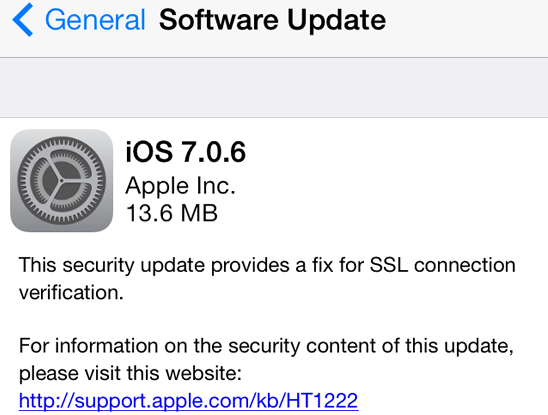How One Line of Code Forced a Full OS Release
It's not often that Apple 'fesses up about a bug, but the release iOS 7.0.6 came about because somehow an extra line of code got added to a function and broke it. Normally a bug would probably not warrant a complete release, but unfortunately this one-liner broke SSL connection verification. This is the code that checks that the connection is talking to the correct destination and uses SSL and TLS to verify it. You can take a look at the source code of the function on Apple's open source website. This is in C, by the way, not objective-C. It's in the function SSLVerifySignedServerKeyExchange, which starts at line 575. Select the whole webpage and copy it into a text editor that shows lines. Skip down to lines 607 and 608, which look like this: if ((err = SSLHashMD5.update(&hashCtx, &signedParams)) != 0) goto fail; Now imagine if line 608 was accidentally duplicated. That was the bug. Just an extra line: goto fail;. This time, of course, there was no error condition to test so it always jumped to the fail label. At this point the variable err (of type OSStatus) would have a zero value, so although the label is meant to be jumped to only when a test fails, there was no failure to kick it off. In C, though, zero is often taken as false and non-zero as true. The value zero is quite often used to mean success while the non-zero value holds the actual error number. That's the case here. So the extra goto meant the code skipped a number of other tests and jumped to the fail: label at line 648. fail: SSLFreeBuffer(&signedHashes); SSLFreeBuffer(&hashCtx); return err; This frees up memory allocated for two blocks of type SSLBuffer and returns err, which has 0 in it and skips all the checks from lines 610-646. The concern that connection verification returns success after only doing a few checks is what led Apple to issue a new version of iOS 7 (and iOS 6 for iPod Touch).



